Top Rankings
Rolling Hills Local School District ranks among the top 20% of public school district in Ohio for:
Category
Attribute
Graduation Rate
Highest graduation rate (Top 10%)
For the 2025 school year, there are 2 public preschools serving 368 students in Rolling Hills Local School District.
Public Preschools in Rolling Hills Local School District have a diversity score of 0.11, which is less than the Ohio public preschool average of 0.58.
Minority enrollment is 5% of the student body (majority Hispanic), which is less than the Ohio public preschool average of 39% (majority Black).
Overview
This School District
This State (OH)
# Schools
5 Schools
839 Schools
# Students
1,469 Students
334,112 Students
# Teachers
85 Teachers
18,897 Teachers
Student : Teacher Ratio
17:1
17:1
District Rank
Rolling Hills Local School District, which is ranked within the bottom 50% of all 918 school districts in Ohio (based off of combined math and reading proficiency testing data) for the 2021-2022 school year.
The school district's graduation rate of 95% has increased from 85-89% over five school years.
Overall District Rank
#531 out of 929 school districts
(Bottom 50%)
(Bottom 50%)
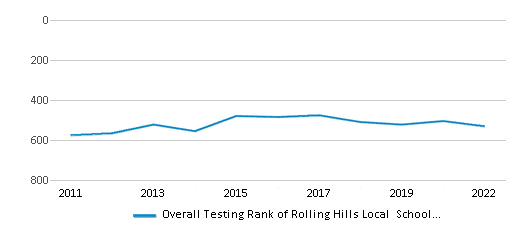
Math Test Scores (% Proficient)
45%
52%
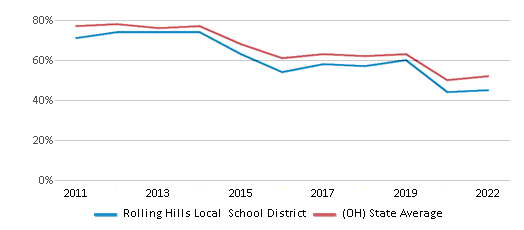
Reading/Language Arts Test Scores (% Proficient)
54%
60%

Science Test Scores (% Proficient)
57%
63%
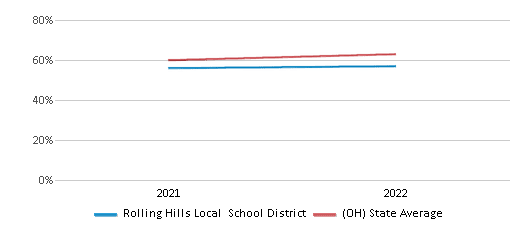
Graduation Rate
≥95%
86%
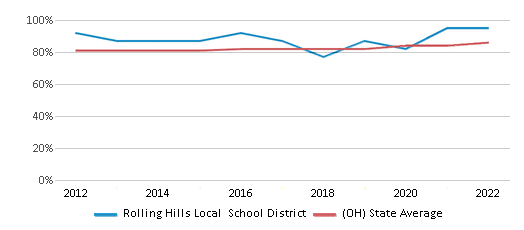
Students by Ethnicity:
Diversity Score
0.10
0.58
# American Indian Students
n/a
462 Students
% American Indian Students
n/a
n/a
# Asian Students
1 Student
8,061 Students
% Asian Students
n/a
3%
# Hispanic Students
30 Students
30,384 Students
% Hispanic Students
2%
9%
# Black Students
2 Students
67,190 Students
% Black Students
n/a
20%
# White Students
1,392 Students
204,949 Students
% White Students
95%
61%
# Hawaiian Students
n/a
329 Students
% Hawaiian Students
n/a
n/a
# Two or more races Students
44 Students
22,737 Students
% of Two or more races Students
3%
7%
Students by Grade:
# Students in PK Grade:
23
45,802
# Students in K Grade:
111
55,948
# Students in 1st Grade:
102
51,388
# Students in 2nd Grade:
132
49,073
# Students in 3rd Grade:
117
40,515
# Students in 4th Grade:
107
38,905
# Students in 5th Grade:
117
30,860
# Students in 6th Grade:
109
12,193
# Students in 7th Grade:
123
4,329
# Students in 8th Grade:
102
4,221
# Students in 9th Grade:
135
368
# Students in 10th Grade:
132
211
# Students in 11th Grade:
90
188
# Students in 12th Grade:
69
111
# Ungraded Students:
-
-
District Revenue and Spending
The revenue/student of $15,957 in this school district is less than the state median of $17,287. The school district revenue/student has stayed relatively flat over four school years.
The school district's spending/student of $14,504 is less than the state median of $17,235. The school district spending/student has stayed relatively flat over four school years.
Total Revenue
$23 MM
$28,879 MM
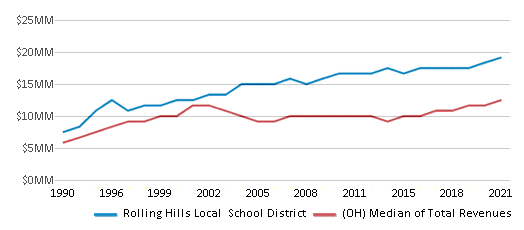
Spending
$21 MM
$28,792 MM
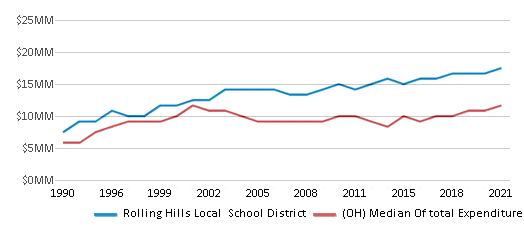
Revenue / Student
$15,957
$17,287

Spending / Student
$14,504
$17,235
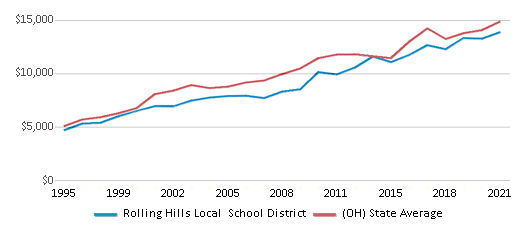
Best Rolling Hills Local School District Public Preschools (2025)
School
(Math and Reading Proficiency)
(Math and Reading Proficiency)
Location
Grades
Students
Rank: #11.
Secrest Elementary School
(Math: 65-69% | Reading: 85-89% )
Rank:
Rank:
5/
Bottom 50%10
58860 Wintergreen Rd
Senecaville, OH 43780
(740) 685-2504
Senecaville, OH 43780
(740) 685-2504
Grades: PK-2
| 157 students
Rank: #22.
Byesville Elementary School
(Math: 50-54% | Reading: 70-74% )
Rank:
Rank:
2/
Bottom 50%10
212 Main St
Byesville, OH 43723
(740) 685-2523
Byesville, OH 43723
(740) 685-2523
Grades: PK-2
| 211 students
Recent Articles

Sexual Harassment at Age 6: The Tale of a First Grade Suspension
A six-year old in Aurora, Colorado, was suspended after singing an LMFAO song to a little girl in his class and reportedly “shaking his booty.” We look at the case and the sexual harassment problem in public schools today.

How Scaffolding Could Change the Way Your Child Learns
This article explores the concept of instructional scaffolding, a teaching method that enhances learning by breaking down complex tasks into manageable parts. It highlights how scaffolding supports students in developing critical thinking skills and becoming more independent learners. The article discusses the benefits of scaffolding, including improved engagement and reduced anxiety, and provides strategies for its implementation across various educational levels.

February 05, 2025
Understanding the U.S. Department of Education: Structure, Impact, and EvolutionWe explore how the Department of Education shapes American education, from its cabinet-level leadership to its impact on millions of students, written for general audiences seeking clarity on this vital institution.





